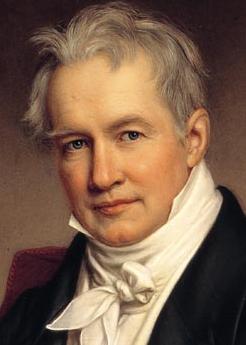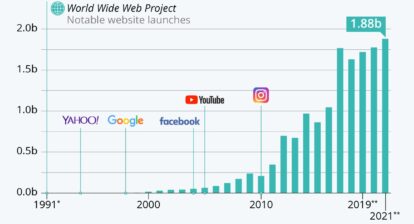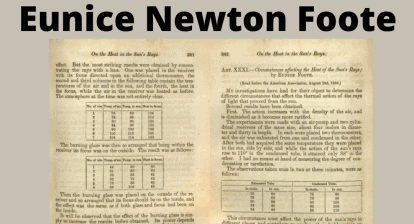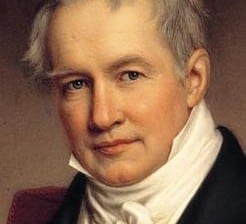You may have heard of the Humboldt Current and of the Humboldt Penguins but you probably don’t know after whom they were named. A very influential scientist that you may never have heard of: Alexander von Humboldt.
Humboldt was born on Sept. 14, 1769 in Berlin, which at that time was part of the Kingdom of Prussia, which itself was part of the Holy Roman Empire. He was a polymath, geographer, scientist, naturalist, explorer, philosopher and painter. By the time he was 45 he had painted a self-portrait.
Humboldt’s driving ambition was to seek out the inter-connectivity of the world. He wanted to understand the entire natural order and he wanted to understand the universe.

Humboldt as a boy with his widowed mother Maria Elisabeth (Colomb) von Humboldt (Wikimedia)
This interest was obvious at a very young age, when he started collecting plants, insects and pebbles at the family’s summer residence. Because of this, he was called “the little apothecary”. He was encouraged by his father, who died when Alexander was just 10 years old. His mother, who was cold and controlling, compelled him to become a civil servant, so that he would stay close to her. So, he started studying economics. But his breadth of interests was so great that he soon moved on to bigger and better things.
He travelled up the Rhine River in 1789 and then to England, where he met and befriended botanist Joseph Banks. This friendship further fueled his interested in botany and in biology. Because of his belief in the inter-connectivity of nature, he started working on botanical geography, laying the foundation for the field of bio-geography. In the same year, he started studying physics and chemistry, as well as mineralogy and geology at the University of Gottingen. The Rhine travels resulted in his 1790 treatise ( Mineralogic Observations on Several Basalts on the River Rhine).
He eventually joined the School of Mines in Frieberg, Saxony but left in 1792 without getting a degree. After obtaining an appointment at the Mining Department of the Prussian government, he traveled extensively, supervising all mining activity for the government. He also invented a safety lamp and established a technical school for young miners with his own funds during this time.
Alexander perhaps always knew that he would not be limited to mineralogy and mines. He resigned in 1797 in order

Map of Alexander von Humboldt’s Latin American expedition (Wikimedia)
to pursue his real passion — scientific exploration. This was the time after the Napoleonic wars and scientific exploration was limited due to political uncertainty. But he managed to get the permission of the Spanish government to visit their colonies in Central and South America. Financing the expedition himself, he spent 5 years travelling the region with French botanist Aimé Bonpland. They travelled through grassland and rivers, and climbed mountains and volcanoes. His ascent of Chimborazo to a height of 5,878 metres out of 6,310 metres remained a world mountain climbing record for nearly 30 years. They both suffered from mountain sickness but Humboldt even turned this into a learning opportunity. He was the first person to suggest that mountain sickness was due to a lack of oxygen at great heights. He studied the current off the west coast of South America- which came to be known as the Humboldt Current, although now it is called the Peru Current. The trip resulted in the collection of a prodigious amount of information, new plants species, the determination of longitudes and latitudes, measurements of Earth’s geomagnetic field, observations of temperature and pressure, geological data, as well as statistical social and economic data from Mexico.

Humboldt and his fellow scientist Aimé Bonpland near the foot of the Chimborazo volcano, painting by Friedrich Georg Weitsch (1810) (Wikimedia)
Humboldt spent over 20 years publishing his findings in Paris, where he lived after the expedition. His scientific results, when published, spanned 30 volumes. His meteorological data — highlighting mean daily and nightly temperatures — and his representations of isotherms and isobars on weather maps, helped to lay the foundation of comparative climatology. His most important observations however, were those that he made on the relationship between a region’s geography and its flora and fauna, and the role volcanoes and earthquakes played in the development of the earth’s crust. This last one changed the contemporary view that that the surface of the Earth had been totally formed by sedimentation from a liquid state, because he popularized the idea that volcanoes are important in creating and forming landscapes in many of his public lectures.
Even though his fortune had been significantly depleted because of his expedition and publishing his work, he continued to help aspiring scientists and students financially. He was also anti-slavery and spoke against it.
However, Humboldt eventually ran out of funds and left Paris in 1827 to go back to Berlin and serve as a tutor to the crown Prince, as well as a member of the privy council and court chamberlain. Not only did he give lectures at the University of Berlin, he also organized Berlin’s first international scientific conference in 1828.
In 1829, he traveled to Russia as far as the Altai Mountains and the Chinese border. This resulted in important geographical, geological and meteorological data about Central Asia — a little known region of the world at that time.
Before the Russian expedition, he had already become interested in the Earth’s geomagnetic field and successfully urged the Royal Society in Britain to establish observatories at their overseas territories. This helped other scientists to correlate the appearance of magnetic storms to solar activity.
Alexander von Humboldt spent the last 25 years of his life writing Kosmos — one of the most ambitious scientific works ever published. His methodology of observation and precise quantitative measurements using sophisticated instruments came to be known as Humboldtian Science. During his lifetime, he became one of the most famous men in Europe and a member of many scientific societies. His work influenced many scientists and artists, including Charles Darwin, who made frequent references to his work in Voyage of the Beagle. When Darwin’s journal was published, he sent a copy to Humboldt.
He lived to the age of 89 dying on May 6, 1859 probably due to failing health from an earlier stroke and was buried at the family resting place at Tegel, Berlin.
Humboldt’s travels and work influenced the field of biology, geology and geography by providing information on the diversity and distribution of living organisms and their relationship to their environment. Through his many geological, botanical and meteorological maps, he highlighted how distant parts of the Earth can be more interconnected than their immediate neighbours and how the inner workings of the Earth influenced its geography, plant and animal life. In this way, he also laid the foundation of ecology. He was perhaps also the first person to talk about human induced climate change in 1800 and again in 1831, based on observations generated during his travels.

Isothermal map of the world using Humboldt’s data by William Channing Woodbridge (Wikimedia)
Many honours were bestowed upon him during his life and they continued for a while after his death. More species are named after Humboldt than after any other human being but even with all of this and considering the impacts he made, Alexander von Humboldt remains largely forgotten.
The selected Optin Cat form doesn't exist.
[donate-with-info]







